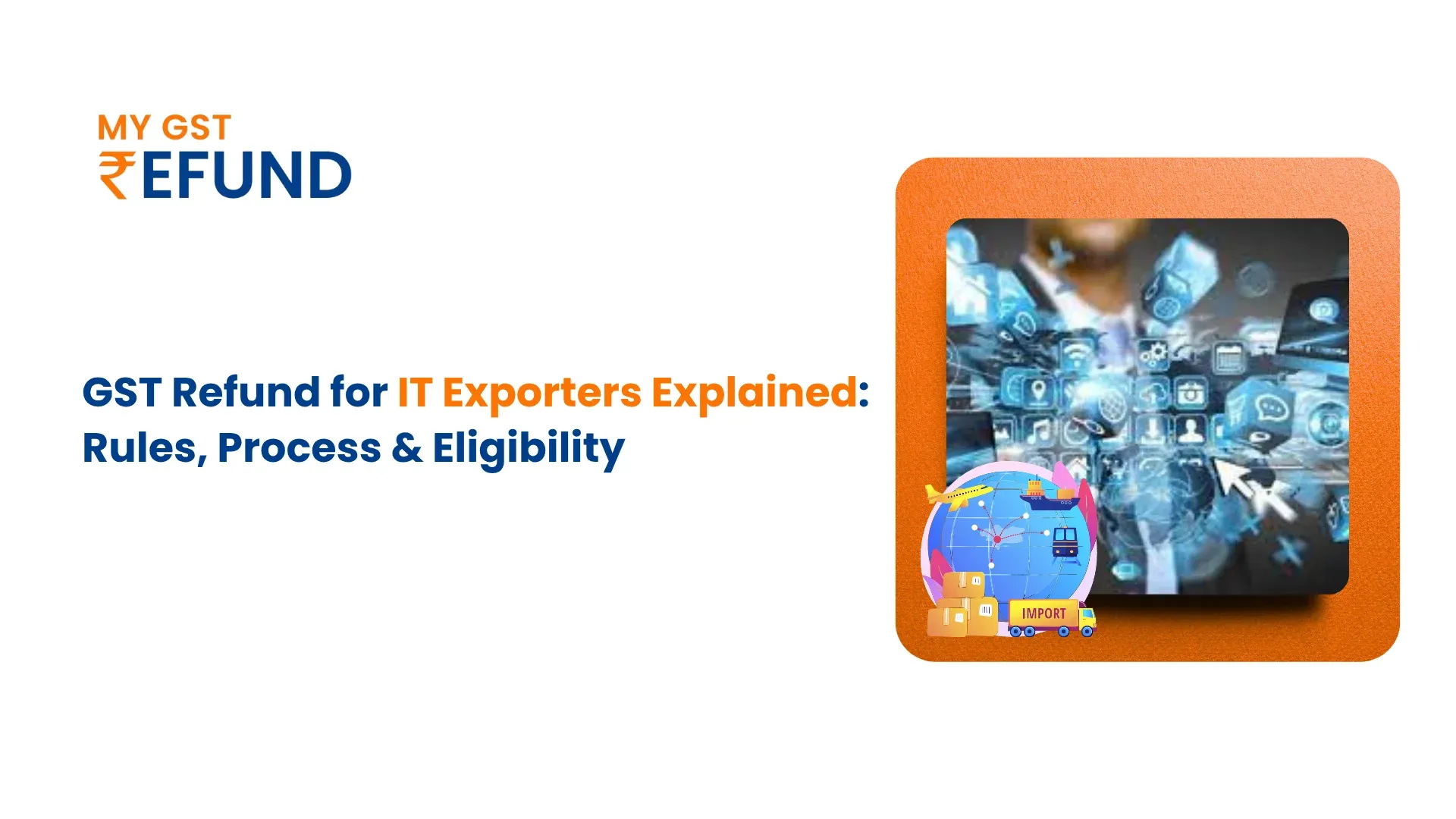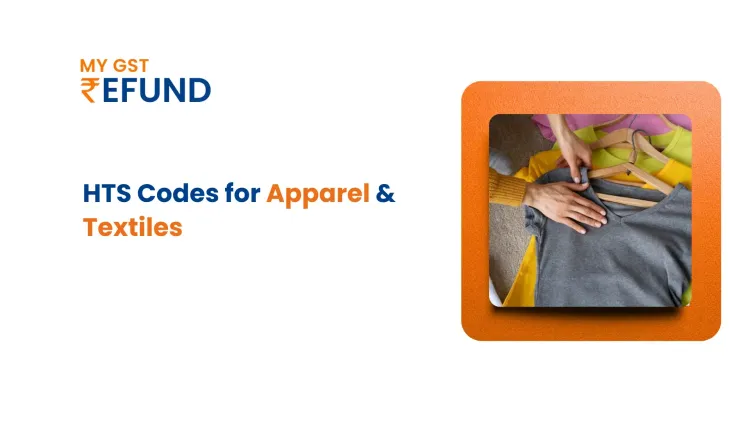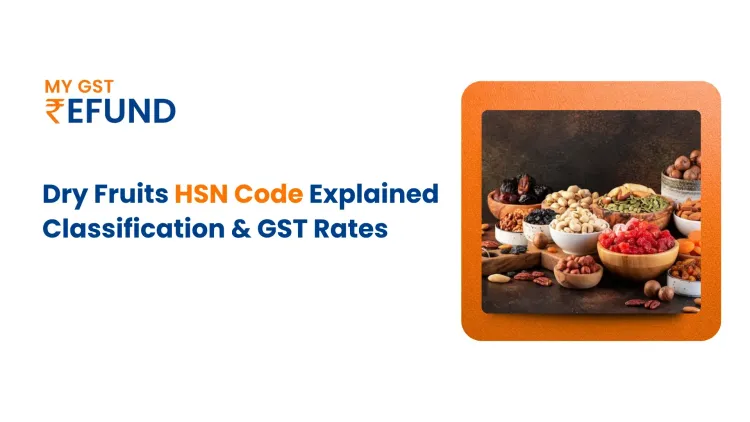GST Refunds for IT Exporters: Everything You Need to Know
IT companies are subject to a special taxation environment with services rendered across borders and payments in a foreign currency. Services exported under the GST regime are considered zero-rated supplies and therefore, they will provide IT exporters with a notable tax refund.
This blog elaborates on the GST Refund mechanism for IT exporters, the obstacles that they usually have, and how the processes would be sped up with expert-driven processes.
What are GST Refunds for IT Exporters?
Services exported under GST fall under zero rating; no GST is levied on outward supply. Exporters are, however, likely to pay GST on their purchases of input services like software applications, renting office space, cloud services, professional services, maintenance of hardware, and so on.
To avoid the blockage of the working capital, the law permits exporters to obtain a refund of the Input Tax Credit (ITC) built up on these purchases. Refunds also guarantee that exporters are competitive in the international market, but their cash flows are healthy.
There are two Refund options available for IT Exporters:
1. Pay export service IGST and claim IGST Refund.
2. Export with LUT/Bond and no payment of IGST, and claim the accumulated ITC Refund.
The two systems are supposed to create tax neutrality for exporters.
How MYGST Refund Helps IT Exporters Claim GST Refunds
MYGST Refund is India’s #1 GST Refund consultant, helping IT exporters claim their Export GST Refunds quickly and hassle-free. With a no success, no fee policy, we ensure you get your rightful refund without any risk. Want to claim your IT export GST refund? Get started with MYGST Refund today!
Types of GST Refunds Available for IT Exporters
1. Refund on Export of Services Under IGST Issuance.
IT exporters can decide to pay IGST on the invoices of their exports and claim the same as refunds.
This method includes:
- Production of export invoices with IGST.
- The declaration is to be made in GSTR-1 and GSTR-3B.
- The BRC/FIRC receipt of foreign currency.
There is a higher level of convenience when refunds in this category are done, as the system balances shipping bills (where applicable), export information, and return information electronically. It minimizes the human interaction and the delays in verifications.
2. Accumulated input tax credit (ITC) Refund Under LUT/Bond.
A vast majority of IT exporters choose the LUT (Letter of Undertaking) method in order to omit the IGST payment at the very beginning.
- Export of services is not subject to any tax.
- Any input taxes that are paid on purchases accumulate as ITC ·
- This accumulated ITC can be refunded to the exporters.
To file this refund, an elaborate application (Form RFD-01) is needed, including supporting documentation, ITC calculations, invoices, reconciliations, and foreign inward remittance evidence.
Legal and Compliance issues: The issues that IT exporters face.
Although the law explains everything clearly, the refund cycle is usually interrupted by a few things, such as:
1. GSTR-1 and 3B and bank remittances have data mismatches.
There should be perfect reconciliation of exports in all filings. Even slight discrepancies are slowing down refunds.
2. LUT/Bond documentation errors.
Wrong or out-of-date LUTs can result in rejections or notices.
3. Incorrect ITC claims
ITC on blocked credits or unqualified services results in scrutiny or disallowance.
4. System-based errors
Refund claims may be trapped on the GST portal or ICEGATE due to technical glitches.
5. Lack of legal understanding
GST officers occasionally pose questions that can be interpreted by experts, particularly in the classification of services, place-of-supply matters, or even the eligibility of ITC.
Early compliance and legal assistance to exporters ensures that the exporter does not have to wait months to go ahead, and it does not lead to the working capital being tied up, resulting in financial strains.
Eligibility for IT Exporters to claim GST Refunds.
An IT exporter should ensure that they meet the following criteria to claim GST refunds:
- The service is an “export of service” that falls in Section 2(6) of the IGST Act.
- The client is outside India
- In convertible foreign exchange is paid.
- There is consistency in GSTR-1 and GSTR-3B returns.
- A valid LUT is provided if exportation is done without the payment of IGST.
- Remittances and export invoices match.
- Each of the invoices of the input tax is in accordance with Section 16.
When eligibility is done properly, refund filings are legally sound and can be defended against in case of audit.
Documents needed for GST Refund claims
An effective process of refunds requires a well-documented history. IT exporters must maintain:
- Export invoices
- Foreign inward remittance by BRC/FIRC.
- Documents of LUT/Bond (where applicable)
- Records of GSTR-1 and GSTR-3B filing.
- Statement 2/ export turnover statements.
- ITC ledger reports
- CA certification wherever required.
Correct documentation not only expedites the process of refunds but also secures the exporter during departmental audits.
Step-by-Step GST Refund Process for IT Exporters
Step 1: Submission of Refund Application.
The exporters fill out the form GST RFD-01 on the GST portal to claim ITC refunds. In the case of IGST refunds, the refunds are automatic by matching the data.
Step 2: Acknowledgement
In a few days, a GST officer accepts the application (RFD-02).
Step 3: Provisional Refund (90%)
In case documents are in order, 90% of the refund is temporarily sanctioned to relieve the stress of working capital.
Step 4: Final Refund Order
Following the screening of documents, the other 10% is issued through RFD-06.
Step 5: Response to Enquiries or Rejections.
In case any officer gives a deficiency memo, exporters must correct and resubmit the claim. The effects of such queries can be greatly mitigated through expert assistance.
Why is Effective Refund Management important to the IT Exporters?
- Avoids blockage of working capital.
- Reduces operational stress
- Enhances the cash flow on salaries, tools, and scaling.
- Assures competitive prices abroad.
- Increases the auditing effectiveness.
The rapid and compliant refund cycle enhances financial effectiveness and business expansion.
Conclusion
Timely GST Refunds will also be critical to the IT exporters who are highly dependent on continuous cash flow to operate globally. Exporters can acquire a refund through an efficient process, documentation, and compliance support mechanisms, and prevent disputes and maintain good liquidity.
Frequently Asked Questions
1. What is the distinction between IGST refund and ITC refund of IT exporters?
IGST refunding is done when invoices have been paid IGST on export. An ITC refund is made when exports are made in the absence of payment of IGST under LUT, and the accumulated ITC is refundable.
2. Is it possible to provide GST refunds without the assistance of professionals to IT exporters?
Yes, but filing by hand usually causes mismatches, notices, as well as delays. Automated platforms provide precise and quicker approvals.
Related Posts






